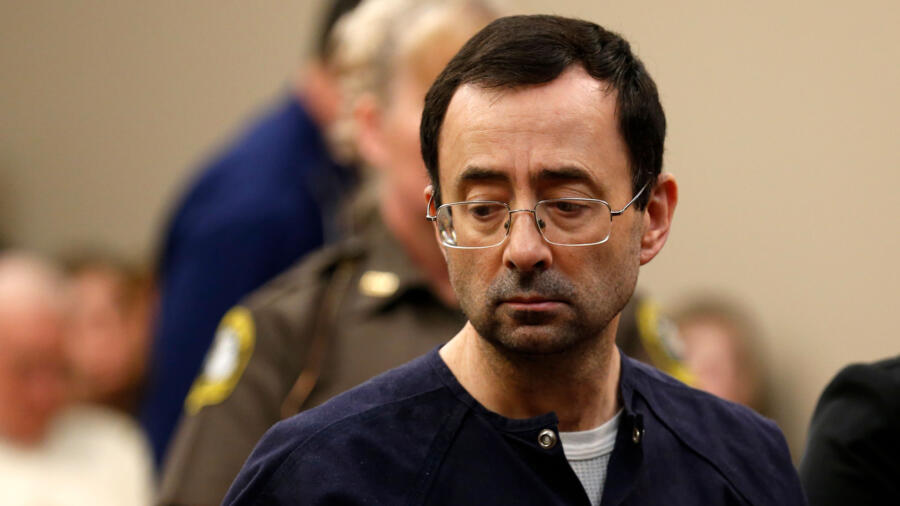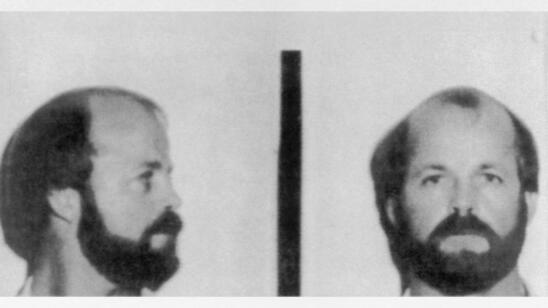It started with two accusations in the late summer of 2016. Former gymnast Rachael Denhollander told The Indianapolis Star that Larry Nassar, the national team doctor for USA Gymnastics, had sexually assaulted her under the guise of medical care when she was 15 years old. Another gymnast, who initially chose to remain anonymous but later identified as Olympic medalist Jamie Dantzscher, provided a similar story.
After those accusations, astonishing numbers of women came forward with allegations of their own. By the time Nassar was sentenced to 60 years in federal prison in July 2017, his accusers numbered in the hundreds, mostly athletes training and competing under the auspices of USA Gymnastics (the governing body for gymnastics in the country) and Michigan State University, where he worked. Among the accusers: all five members of the gold medal-winning London 2012 Olympics squad: McKayla Maroney, Aly Raisman, Jordyn Wieber, Gabby Douglas and Kyla Ross.
Michigan State University settled a lawsuit with more than 300 of Nassar’s victims for $500 million in May 2018. A lawsuit against USA Gymnastics remains ongoing, with the victims in that case rejecting a $215 million offer in January 2020.
[Watch Breaking Their Silence: Inside the Gymnastics Scandal on A&E Crime Central.]
When Nassar was sentenced to his third (and final) sentence of 40 to 125 years, it was clear he would never be a free man again. Only question remained: How had he been able to get away with such heinous crimes for so long?
How Larry Nassar Rose in Prominence
Larry Nassar first started working with gymnasts in his high school, as a student athletic trainer at North Farmington High School in suburban Detroit. He continued to work with gymnasts as an undergraduate, and rose through the ranks of national gymnastics in the early 1980s.
Daniel Murphy—an investigative reporter who wrote Start by Believing: Larry Nassar’s Crimes, the Institutions that Enabled Him, and the Brave Women Who Stopped a Monster—explains that much of Nassar’s early success was partly owed to his enthusiasm.
“At the time, his willingness to do a lot of this stuff for free and volunteer his time and pay his own way to national gymnastics events…helped him shoot up very quickly through the ranks to becoming the top gymnastics doctor,” Murphy tells A&E True Crime. “He was named national medical coordinator of USA Gymnastics in 1996, [but] he didn’t have a full time job as a doctor until 1997. So his interest in the sport specifically and the lack of other people willing to be as involved as he was helped him.”
According to Murphy, Nassar’s apparent passion for the sport also meant that he better understood what the gymnastics coaches wanted of him. And he delivered.
“There was no doctor or athletic trainer who was as passionate about the sport as Nassar was. Probably in the world. So he understood the sport,” says Murphy. Rather than suggesting rest and rehabilitation for injured athletes, Murphy says, “Nassar knew the sport well enough and knew that time crunch… because gymnastics careers are so short. So he provided coaches with workarounds and ways to keep athletes…active and training while working their way through injuries. And he was very smart in understanding how to diagnose gymnastics injuries.”
John Manly—an attorney who was lead counsel for Nassar’s victims in a lawsuit against Michigan State University, and also represents survivors in ongoing litigation against USA Gymnastics—has a less charitable interpretation of Nassar’s medical skills.
“The reason he’s indispensable…is he’s pliable in terms of his medical opinion. A real doctor, when you see someone has a broken back, says ‘You’re not competing.’… A real doctor would apply the Hippocratic oath. Nassar didn’t do that,” Manly tells A&E True Crime. “Nassar was pliable and did exactly what the people in charge wanted him to do.”
Larry Nassar’s Method of Evading Suspicion
Under the guise of medicine, Nassar would sexually assault young girls that he trained. Almost all of the complaints against him follow the same pattern: Nassar would tell young girls under his care that he was performing “pelvic floor physical therapy” as an excuse to digitally penetrate them.
Murphy says many young children told their parents that Nassar was touching them inappropriately. But when the doctor was confronted, he would explain it away as a form of therapy—a manipulation of tendons in the general area of the genitals.
“Parents—who are averse to asking follow-up questions because it’s uncomfortable conversation to have with your child—never got the specifics of where and how he was touching them,” says Murphy, and so “somewhere in that line of communication between child to parent to authority to Nassar explaining away what he was doing and trying to make it sound legitimate, there’s enough murkiness to believe Nassar’s version of things without fully understanding what the girl was trying to say.”
Red Flags, Ignored
After Nassar’s crimes came to light and more victims came forward, earlier accusations began to emerge, dating back to the late 1980s, when a then-8-year-old alleged she was molested at a gymnastics club in Lansing, Michigan.
But the earliest accusation that was reported contemporaneously dates to 1997, when Nassar was working at Michigan State. While there, Larissa Boyce—then 16 years old—alleges that she complained to MSU’s gymnastics coach Kathie Klages. Klages denied the allegation, for which she was later found guilty of two counts of lying to police in February 2020. She still awaits sentencing.
According to Murphy, several allegations followed: in 1998, 1999, 2004.
“I would say there were roughly a dozen people who tried to report him,” Murphy says.
Deborah Daniels, an attorney who conducted an internal investigation into USA Gymnastics at the behest of the program, says the culture and policies of the gymnastics program inhibited victims from coming forward.
“The whole process of filing reports of misconduct was not conducive to encouraging young, frightened girls,” Daniels tells A&E True Crime, noting that the “grievance process” required written reports signed by the athlete or the athlete’s parents.
“These kids are just terrified. They’re not going to do that sort of thing,” Daniels says.
That inhibiting process for the gymnasts and the program’s implicit trust in Nassar spelled a lot of danger for the children, says Manly—something he says is illustrated by the USA Gymnastics security protocol at the Karolyi Ranch, where the gymnasts would live in the months leading up to a big competition.
“There was no security… if [an athlete] had a problem at night, you would call Larry Nassar. That’s who the girls were instructed to call.”
The Karolyi ranch was closed in January 2018, the same month in which the Texas Rangers opened a criminal investigation into how those at the ranch may have enabled Nassar’s sexual abuse. That investigation remains ongoing.
An attorney for the Karolyis did not immediately respond to requests for comment.
Related Features:
How Two Detectives Tracked Down a Serial Rapist—After Police Didn’t Believe His First Victim
How to Catch More Serial Rapists
Was Sexual Abuse Behind the Menendez Brothers’ Murders?


